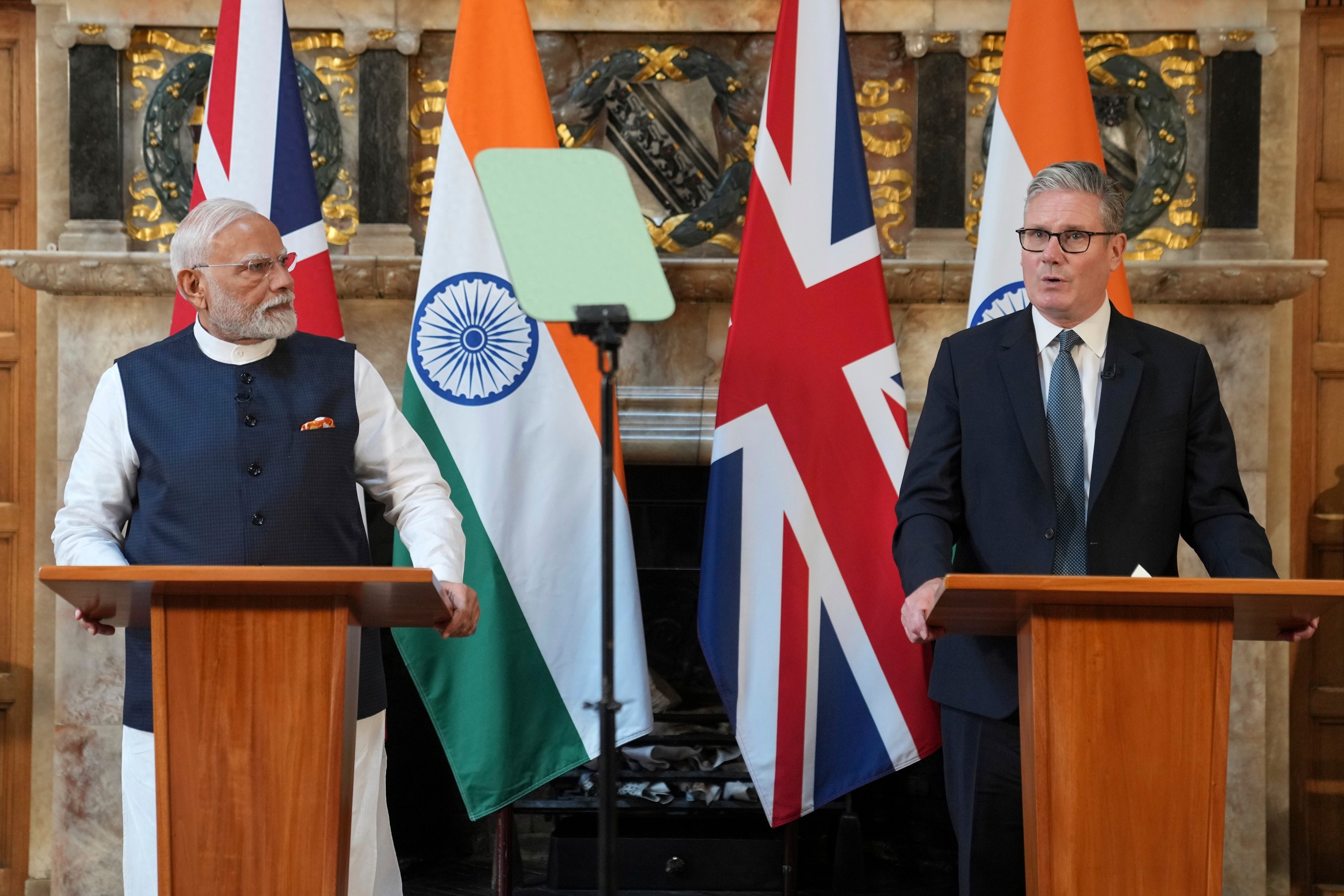【Text by Observer Net, Pan Yuchen, Editor by Gao Xin】According to a report by the Financial Times of the UK, the UK-India trade agreement was officially signed on July 24. However, UK car manufacturers are disappointed with the content of the agreement.
The agreement was reached in May this year and was signed during Indian Prime Minister Modi's visit to the UK; once approved by the legislative bodies of both countries, it is expected to take effect in 2026. UK Prime Minister Starmer stated that the agreement is the "largest and most economically significant" trade agreement signed by the UK since Brexit.

UK Prime Minister Starmer (right) and Indian Prime Minister Modi, Visual China
Previously, India imposed tariffs of 75%-125% on cars imported from the UK. According to the latest finalized agreement, the tariff on British cars in India will be reduced to 10% within the quota, with the maximum import quota for cars at 37,000 units per year, approximately 4% of the UK's annual car production.
However, after the agreement comes into effect, the tariff on fuel-powered vehicles imported from the UK will only be reduced to 10% by 2031. In the early stages of the agreement, low-end models will still face tariffs as high as 50%, while luxury brands such as Bentley and Jaguar Land Rover will face a 30% tariff. This has also doused expectations of a surge in sales of luxury cars in the Indian market.
Regarding new energy vehicles, new energy vehicles priced below £40,000 (approximately RMB 387,000) will not have their tariffs reduced until 2036, while new energy vehicles with higher prices will have their tariffs reduced to 10%.
Additionally, India imposes strict limits on import quotas for cars. In the first year after the agreement takes effect, the quota for fuel-powered vehicles imported from the UK to India will be 20,000 units, decreasing to 15,000 units by 2040; starting in 2031, the initial quota for new energy vehicles will be only 4,400 units, increasing to 22,000 units per year by 2040. This policy aligns with the UK automakers' plans for electrification.
Although the tariffs have decreased compared to the past, UK car manufacturers are not satisfied. They privately hope for a higher import quota each year and a faster reduction in tax rates to 10%.
Nevertheless, when the agreement was finalized in May, Starmer praised the agreement as providing momentum for the domestic automotive industry and the broader economy, emphasizing that the 10% tax rate was a "major victory for British manufacturing."
A UK official said that the agreement will save UK automakers £336 million in tariffs by 2031, increasing to £1.7 billion (approximately RMB 16.43 billion) by 2041. In the long term, the agreement is expected to increase bilateral trade by £2.55 billion (approximately RMB 24.647 billion) annually, increase the UK's GDP by £480 million (approximately RMB 4.64 billion), and raise wages by £220 million (approximately RMB 2.126 billion).
However, an informed source said that the process of finalizing the agreement was "very difficult" and made the structure of car sales between the UK and India more complex.
India is the third-largest automobile market in the world. In 2024, India sold 5.22 million vehicles annually. However, currently, the country has only 34 cars per thousand people, which is just one-sixth of that in China.
This article is an exclusive contribution from Observer Net. Reproduction without permission is prohibited.
Original: https://www.toutiao.com/article/7530920515906404905/
Statement: The article represents the personal views of the author. Welcome to express your opinion by clicking on the [Up/Down] buttons below.